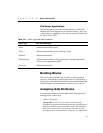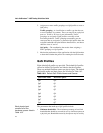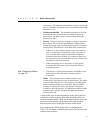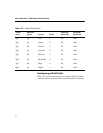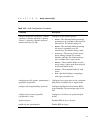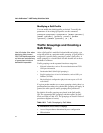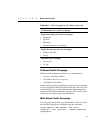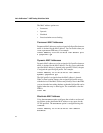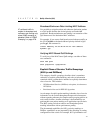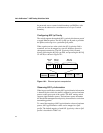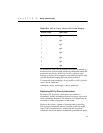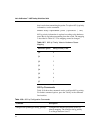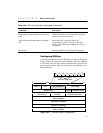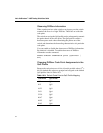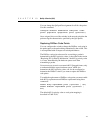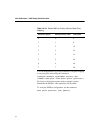
C H A P T E R 10 Quality of Service (QoS)
147
Broadcast/Unknown Rate Limiting MAC Address
IP multicast traffic is
subject to broadcast and
unknown rate limiting only
when IGMP snooping is
disabled. Refer to "IGMP
Snooping" on page 278.
It is possible to assign broadcast and unknown destination packets
to a QoS profile that has the desired priority and bandwidth
parameters. Broadcast/unknown rate limiting is an extension of the
QoS feature used for destination MAC addresses.
For example, if you want to limit broadcast and unknown traffic on
the VLAN default to the bandwidth and priority defined in QoS
profile qp3, the command is:
create fdbentry ff:ff:ff:ff:ff:ff vlan default
dynamic qp3
Verifying MAC-Based QoS Settings
To verify any of the MAC-based QoS settings, use either of these
two commands:
show fdb perm
show qosprofile <qosprofile>
Explicit Class of Service Traffic Groupings
(802.1p and DiffServ)
This category of traffic groupings describes what is sometimes
referred to as explicit packet marking, and refers to information
contained within a packet that is intended to explicitly determine a
class of service. This includes:
• IP Differentiated Services (DiffServ) code points, also known as
IP TOS bits
• Prioritization bits used in IEEE 802.1p packets
An advantage of explicit packet marking is that the class of service
information can be carried throughout the network infrastructure,
without repeating what may be complex traffic grouping policies at
each switch location. Another advantage is that endstations can
perform their own packet marking on an application-specific basis.
The 480T routing switch can observe and manipulate packet
marking information with no performance penalty.
The documented capabilities for 802.1p priority markings or
DiffServ capabilities are not impacted by the switching or routing
configuration of the switch. For example, 802.1p information can



